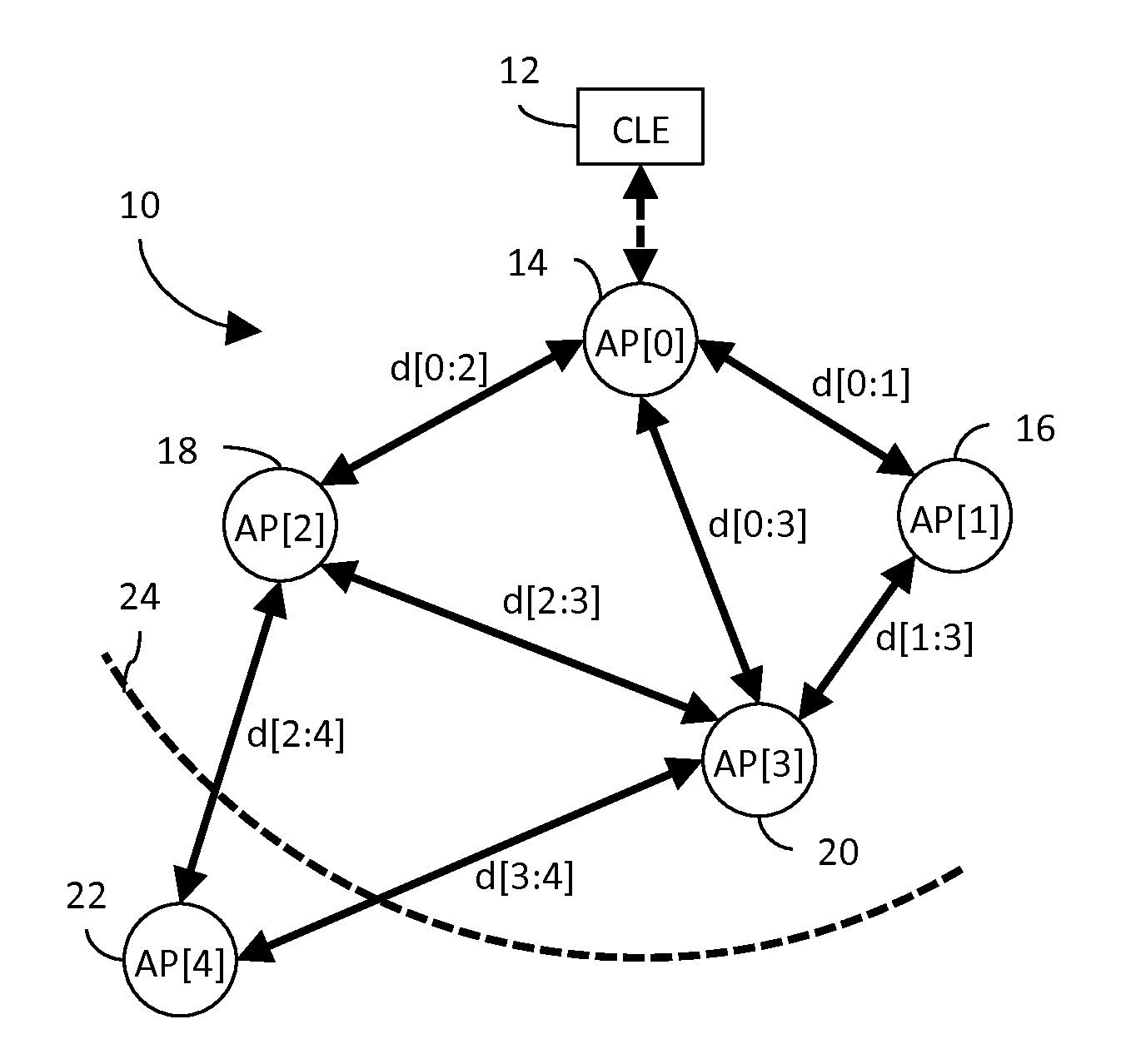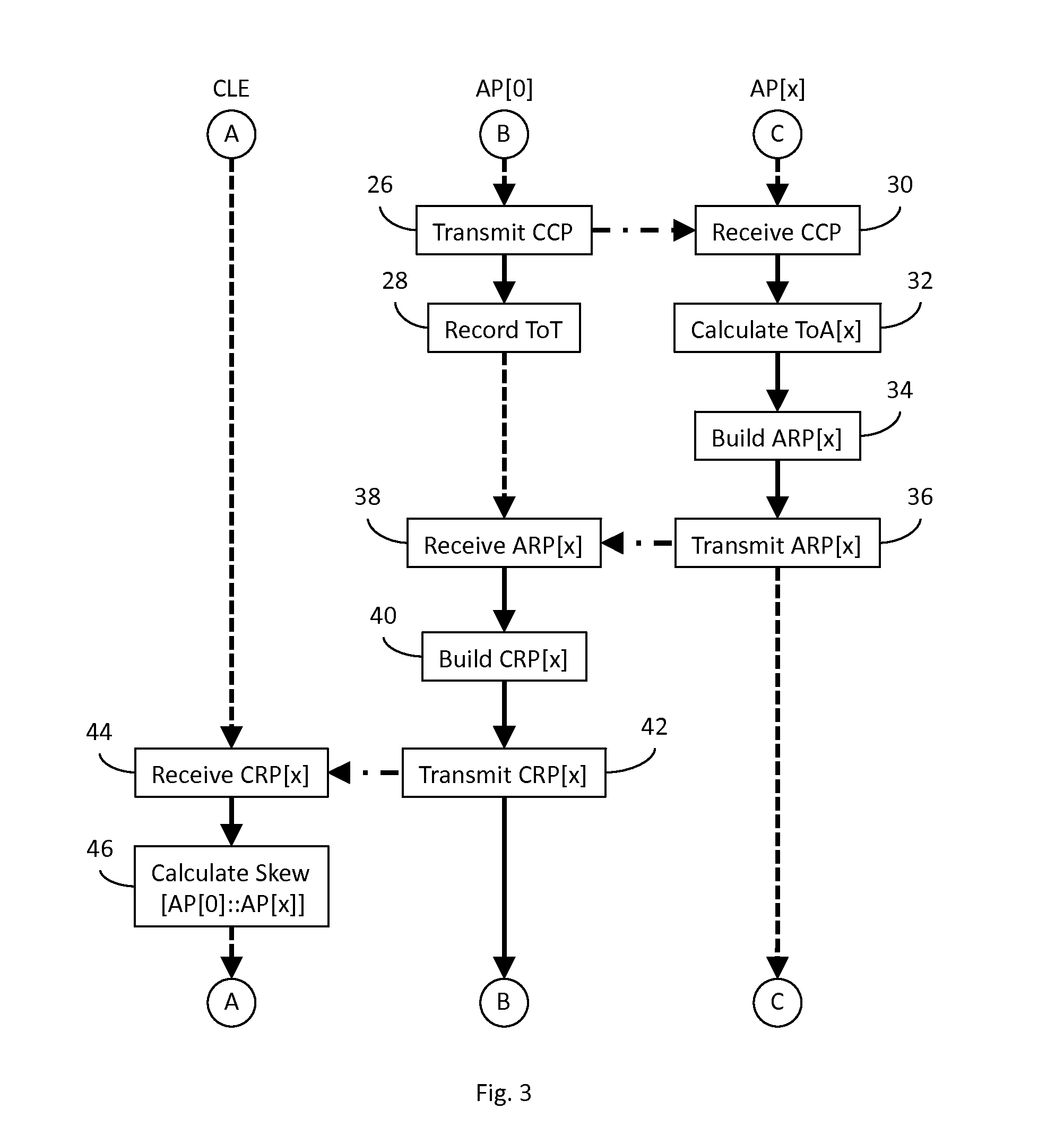Wireless access point clock synchronization system
a technology of wireless access point and clock synchronization, which is applied in the direction of synchronisation arrangement, wireless commuication services, electrical appliances, etc., can solve the problems of relatively difficult to modify the physical configuration of the aps and the installation is relatively expensive, so as to avoid unnecessary proliferation of numbers
- Summary
- Abstract
- Description
- Claims
- Application Information
AI Technical Summary
Benefits of technology
Problems solved by technology
Method used
Image
Examples
Embodiment Construction
[0030]Shown in FIG. 1 is a UWB network 10 comprising a central location engine (CLE) 12 and a plurality of APs: AP[0]14; AP[1]16; AP[2]18; AP[3]20; and AP[4]22; each AP generally comprising a conventional UWB transmitter, receiver and associated control (all not shown for clarity). In the illustrated topology, the physical distance, d, between each pair of APs is depicted as a bi-directional arrow connecting the AP pair, and labeled with the respective distance, d[x:y], where x indicates the first AP of the pair and y indicates the second AP of the pair. By way of illustration, we have shown AP[1-3] as all being within the effective transmission range of AP[0], indicated by dashed arc 24, whereas AP[4] is outside that range and thus must be accessed via either AP[2] or AP[3].
[0031]In network 10, a primary responsibility of the CLE 12 is to synchronize the timebases of all APs so as to assure normalized time references with respect to mobile tag-related reports. As is known, the topo...
PUM
 Login to View More
Login to View More Abstract
Description
Claims
Application Information
 Login to View More
Login to View More - R&D
- Intellectual Property
- Life Sciences
- Materials
- Tech Scout
- Unparalleled Data Quality
- Higher Quality Content
- 60% Fewer Hallucinations
Browse by: Latest US Patents, China's latest patents, Technical Efficacy Thesaurus, Application Domain, Technology Topic, Popular Technical Reports.
© 2025 PatSnap. All rights reserved.Legal|Privacy policy|Modern Slavery Act Transparency Statement|Sitemap|About US| Contact US: help@patsnap.com



